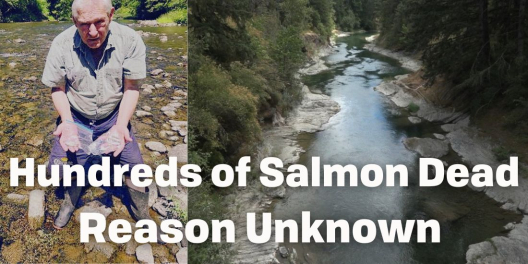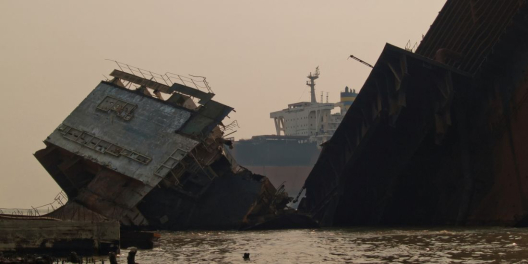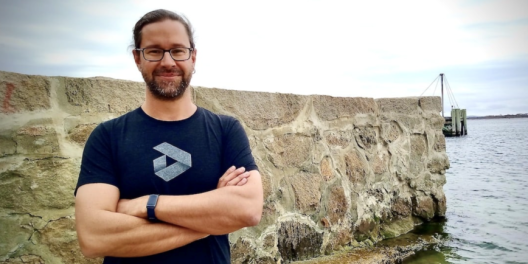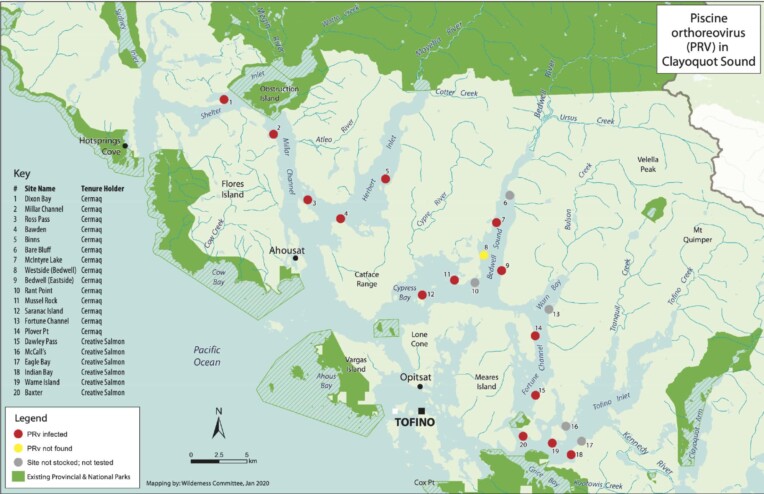
Credit: Wilderness Committee
Clayoquot Sound is a UNESCO Biosphere Reserve. It’s also home to twenty salmon factory feedlots. This is one of the densest concentrations of farmed Atlantic salmon factories on the BC coast.
Each feedlot contains hundreds of thousands of non-native Atlantic salmon in open-net-pens.
These pens are suspended in the ocean and anchored close to shore, usually near the mouths of rivers with large salmon populations.
In the 1970s, Tranquil Creek (IIlsukƛis), located 20 km east of Tofino, supported between 1,000 and 3,000 chinook salmon; three years ago, fewer than 60 returned to spawn.
Clearly, wild salmon stocks in the Sound are being pushed to the brink.
Fish farms in Clayoquot, like elsewhere in BC, have been plagued with environmental problems.
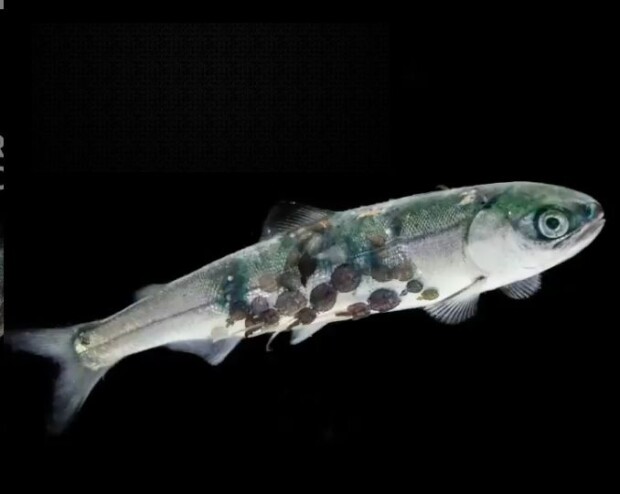
Credit: Instagram / Tavish Campbell
Parasitic sea lice infestations have caused massive die-offs. In addition, the blooms of jellyfish that thrive in the fish-poop-laden wastewater from fish factories are known to spread mouth-rotting bacteria to wild salmon.
In 2020, a study conducted by Tofino-based environmental non-profit Clayoquot Action found that the deadly piscine orthoreovirus (PRV) was present in 14 out of 15 farms where samples of feces, flesh and scales were gathered.
In addition, in 2017, an underwater video showing bloody discharge from farmed fish processing plants in Tofino went viral.
These problems are not unique to Clayoquot. Similar problems plagued the 19 similar fish feedlot operations north of Campbell River. But, in the Discovery Islands, Federal Fisheries Minister Bernadette Jordan took action and ended Cermaq Canada‘s licences.
That same company, Cermaq, also has the biggest operation in Clayoquot. But their feedlots in the Sound haven’t been such down.
Cermaq is one of the largest salmon feedlot farmers in the world, with operations in BC, Norway, Scotland, and Chile. It is one of two companies operating in Clayoquot Sound.
Cermaq’s Clayoquot feedlots are in Ahousaht First Nations waters, although its processing facility in Tofino is in Tla-o-qui-aht First Nations territory. The federal government provided Cermaq with a $700,000 subsidy to test an experimental semi-contained salmon feedlot in the Sound. According to Clayoquot Action, this experimental operation pumps the equivalent of 7 Olympic swimming pools worth of water in and out of the pen every hour.
Cermaq, formerly Mainstream Canada, was Norwegian-owned until 2014 when it was bought by the Japanese conglomerate Mitsubishi.
The other feedlots in Clayoquoy are owned by Creative Salmon, which raises Chinook salmon. Although registered in Canada, the company is partly owned by investors from Japan. It operates only in Clayoquot Sound, in the territory of Tla-o-qui-aht First Nations.
The feedlots in Clayoquot have similar parasite and disease problems to those recently shut down in the Discovery Islands. So why are Cermaq’s Clayoquot pens been allowed to continue to operate?
Doesn’t a UNESCO Biosphere Reserve, one of only eighteen in all of Canada, deserve better treatment?
Don’t Clayoquot’s at-risk wild salmon deserve better?

